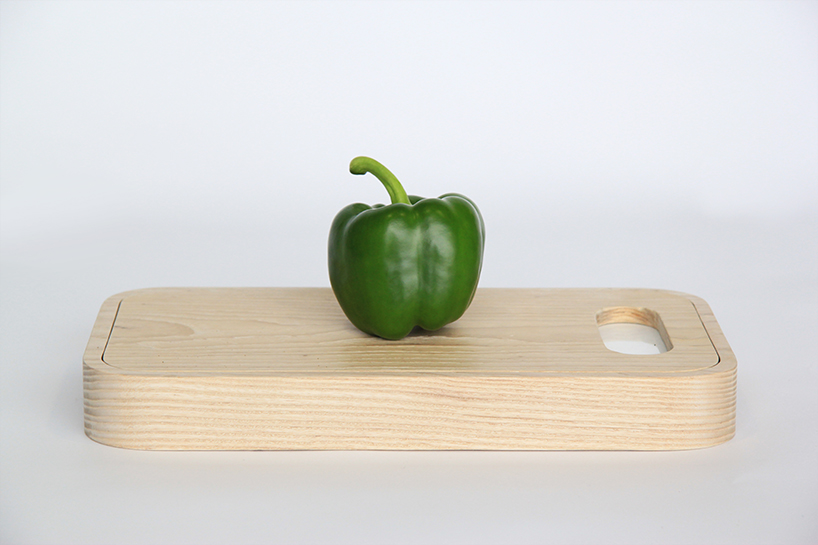
ONE WAY by 1988 from
designer's own words:
ONE WAY explores a potential design methodology to see how in the future products could look and act if they will be designed for different personas. Being a person passionate about food and cooking I decided to apply this concept to a series of cooking tools and observe how aesthetic and functionality can change.
Because of the nature of the product itself, tools are designed following good performance and functionality only. Nowadays it is possible to find in the market products developed targeting very specific typology of users. ONE WAY is an attempt of prediction of how things will be designed in the future by trying to achieve a good performance creating objects which support and communicate the same language of their users rather than following a simple technical development.
The ONE WAY project consists in a set of 4 cooking tools able to create a context of comfort for the users in which they are able to perform efficiently.
How in the future a set of cooking tool would look if designed for someone with high confidence rather than someone who has recently started cooking simple meals? Applying the same theory to a different design field such as automotive for example: How cars in the future would look and behave like if they will be designed for people with fear of speed or someone who had a car accident traumatising his driving experience? Would cars keep their usual shape or perhaps using different materials?
In a kitchen environment, this project has been observing people’ s behaviour and investigating on their identity to create 4 different kits to provide them tools able to make users comfortable in the activity of cooking.
THE 4 SETS DESIGNED:
High process cooking: Food make up set
PERSONA: this typology of people are those mostly consuming highly processed food. Their judgement of quality and taste is driven by the food industry. The way they detect quality in food follows those elements described in advertisement and campaign. Colours, shapes and format define what is good to eat and what is not.
FOOD MAKE UP SET: This set is composed by different products to allow consumers to make up and retouch what they are about to eat. All the food cosmetic products are edible. Beeswax for polishing; food powders for colouring; food pastes for filling and food glue help the users to recolour, fix and adjust the food to make it looking good like those pictures from adverts and packaging on which this type of consumers rely on.
Low process cooking: Chopping board
PERSONA: This typology of people are those mostly consuming whole and raw food. In one hand their confidence and knowledge about food make them interested in looking for food based on the nutritional aspect of it. In the other hand the mistrust toward food industry and the process they apply into the food they sell make them select all those food which have not been through strong manipulations.
CHOPPING BOARD: This thick and rough piece of wood is been obtained from a crude trunk cut in the south Italian countryside with an axe and hand saw. The chopping board is the place where the most of the food preparations take place. In this case it symbolizes an immaculate and natural environment where the food can seat without any contamination. The two simple tools are the only objects able to work the food and they have been designed for a low performance in order to limit the process applicable on the ingredients. Nonetheless the third tool which is a sharpener is provided to give the user the control of the efficiency of the tools and keep the user confident with the effectiveness of the process.
Precision cooking: Precision cooking set
PERSONA: This typology of people approach cookery as a matter of science. Numbers are able to describe the cooking process so it is fundamental to follow them to achieve a good result. In order to keep the feeling of ownership on the cooking process, quantities, timing and right ingredients are those elements which cannot be missed.
PRECISION COOKING SET: This precision cooking tools set is fully made of steel. These objects allow the cook to keep quantities and shapes always at highest accuracy according with the recipe they are following. The tablespoon syringe measures exactly one imperial tablespoon quantity of liquids (17,75 ml); the tea spoon scissor measures exactly one imperial teaspoon of solids (5,91 gr); the scalpel knife for operating precise cuts on seafood and meat; The Mediterranean sea salt pills provide exactly 1,5 gr of salt and the olive oil pills give an extreme accurate amount of 0,5 ml.
Imprecise cooking: Curry palette
PERSONA: This Typology of people approach cookery completely based on their confidence about the process they are about to perform. They trust their own instinct and understanding and they believe the final outcome will be almost always good. So they are not driven by any recipes but they follow an approximate process and they improvise their own formula and they mix, measure perform purely based on their assumption.
CURRY PALETTE: This palette contains 5 basic spices for creating a curry sauce. The shape takes references from a colour palette since the methodology of operating of this typology of cooks reflect several aspects of painter performance. In the centre of the palette takes place the mixing plate in which all the spices are mixed before going to the pot for cooking. The scoop has got a double functionality. The front is a scoop for collecting and mixing spices based on the cook’s taste and the back is a taster pin which goes deep in the pot grabbing some sauce for testing the flavour in case some adjustments are needed.
High processed food cooking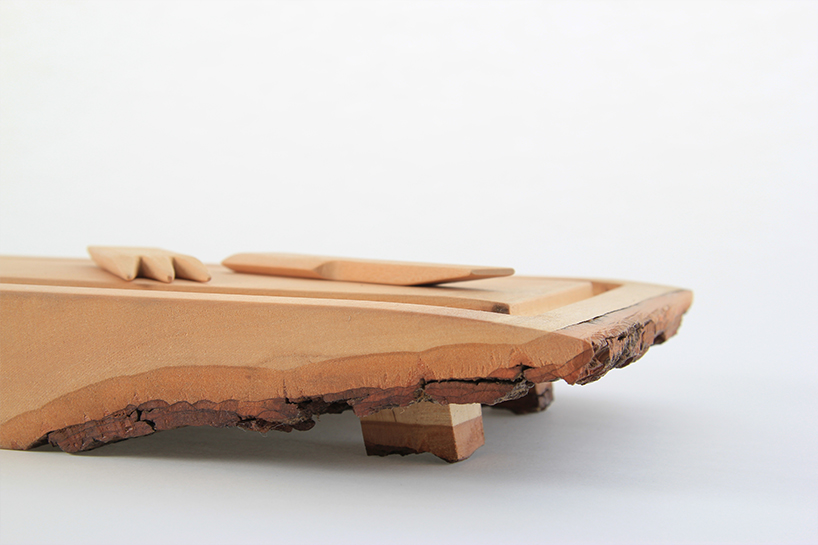
Low processed food cooking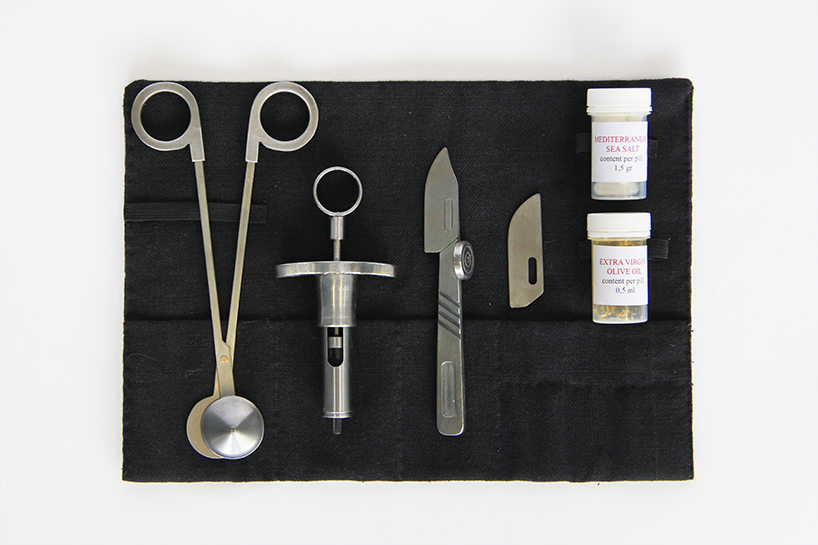
Precise cooking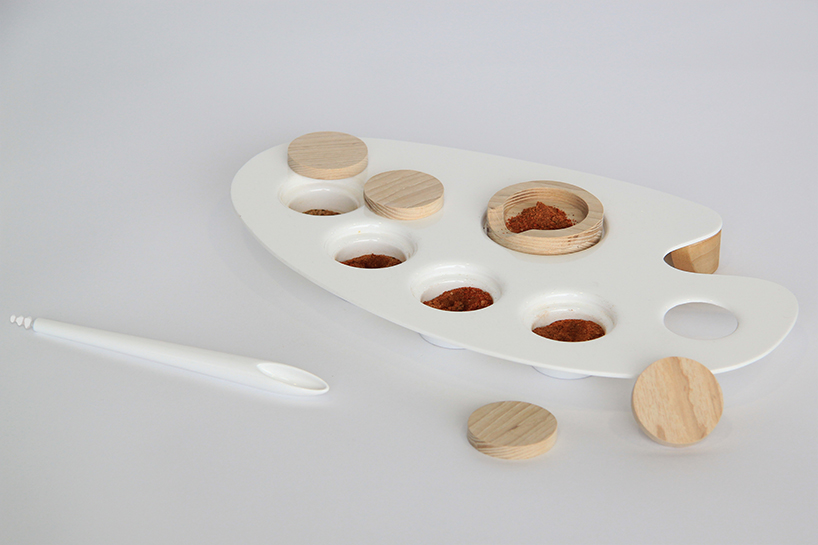
Imprecise cooking
High and low processed food cooking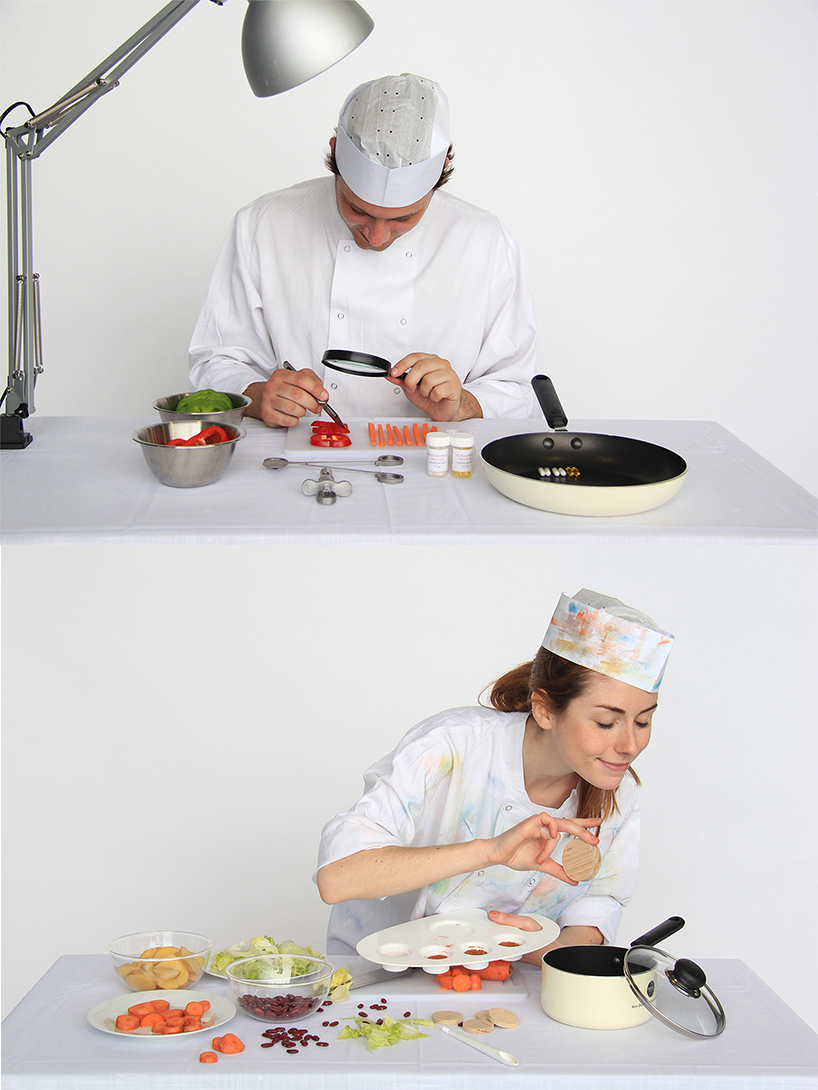
Precise and imprecise food cooking